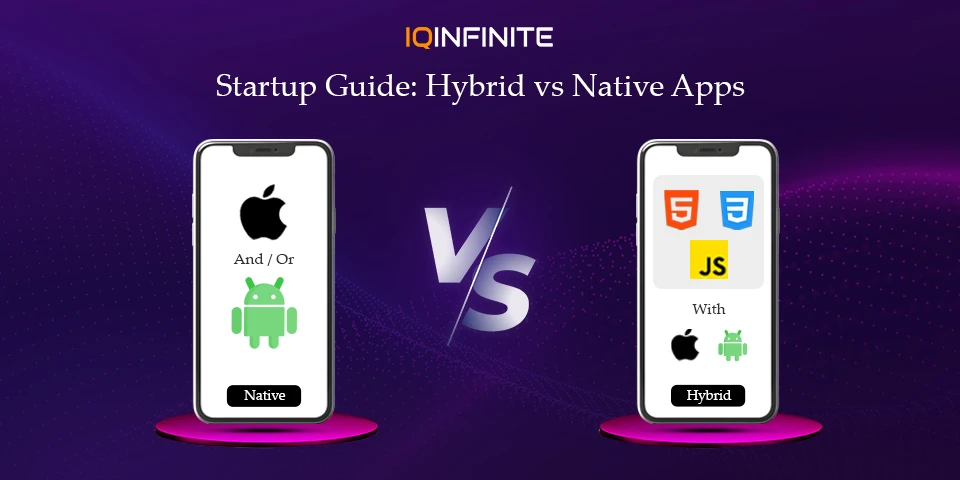Hybrid vs Native App Development for Startups: A Practical Guide

In today’s digital-first era, mobile applications have become the backbone of modern startups. Whether it’s a food delivery platform, fitness tracker or SaaS-based solution, every startup faces an early and crucial decision: Should we build a Hybrid app or a Native app?
This decision directly affects your app’s performance, development cost, scalability and time to market. For startups with limited budgets and ambitious growth plans, choosing the right development approach can make all the difference. After all, users expect apps to run smoothly even during disruptions think of situations like Vodafone internet outages, where app reliability can make or break user trust.
1. Understanding the Basics
What is Native App Development?
Because they are designed exclusively for one platform, native apps deliver exceptional performance, seamless user experience and full access to the device’s hardware and operating system features.
What is Hybrid App Development?
This approach helps startups save time and cost while maintaining consistency across platforms. In simple terms:
Native = Built for one platform
Hybrid = One codebase for multiple platforms
Key Differences Between Hybrid and Native Apps
In contrast, hybrid apps use a single codebase to run across multiple platforms, combining web technologies like HTML, CSS and JavaScript. While this reduces development time and cost, hybrid apps may slightly lag in performance and access to advanced device features due to their web-to-native communication layer.
Here’s a breakdown of the main differences:
1. Development Time:
Native apps take longer to develop since separate versions are required for iOS and Android. Hybrid apps are quicker to build because one codebase serves multiple platforms.
2. Cost:
Native app development is more expensive due to separate coding efforts, whereas hybrid apps are more budget-friendly since developers write code once for both platforms.
3. Performance:
Native apps deliver excellent performance as they are fully optimized for the platform. Hybrid apps may experience slight performance delays due to the extra web layer.
4. User Experience:
Native apps provide a highly polished and platform-specific experience, while hybrid apps offer a consistent look and feel across all devices but may lack the native touch.
5. Maintenance:
Updating native apps can be complex since changes must be made separately for each platform. Hybrid apps are easier to maintain because updates apply across platforms simultaneously.
6. Access to Device Features:
Native apps have complete access to device hardware and features such as camera, GPS and notifications. Hybrid apps have limited access, often relying on third-party plugins or frameworks.
Advantages of Each Approach
Benefits of Native App Development
Benefits of Hybrid App Development
Which One Should Startups Choose?
Choose Native App Development if your app requires top-notch performance, complex features or high security for example, gaming, streaming or fintech apps. Native development is ideal when user experience is your top priority and you plan for long-term scalability.
Choose Hybrid App Development if you want to launch faster, test your idea or save development costs. It’s a smart choice for startups that need to validate their business concept before committing to a more resource-intensive native approach.
Many successful startups follow a mixed path start with Hybrid, scale to Native once the app gains traction.
Future Trends
The rise of AI-driven development tools and low-code platforms is further helping startups build apps faster, with less technical effort and reduced costs.
Conclusion
A strategic approach that works for many startups is to start hybrid and scale native launch a hybrid MVP to validate your idea and once your product gains traction, migrate to native apps for better performance and richer user experience.
